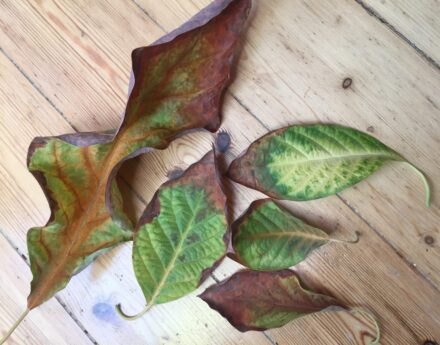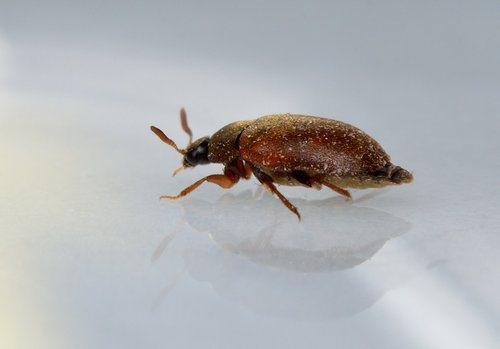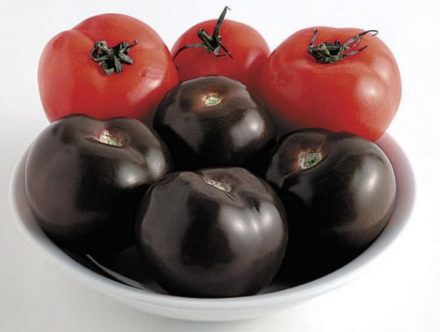If, when cutting an avocado, dark spots, brown streaks or black spots are found on its flesh, then you should not throw it away immediately. It is necessary to determine what caused such internal changes.

What pulp defects can there be and their causes?
Suppliers bring unripe fruits to the country, taking into account that they will ripen during transportation and storage on store shelves and warehouses. If the rules or terms of transportation were violated, the avocado may become unusable. Sometimes you can get ahead of this only by cutting the fruit and looking at its pulp.
Brown veins inside
Avocado flesh turns brownish in color if you leave the cut fruit for a while. The same process occurs in it that is observed when cutting an apple - iron, which the fruit is rich in, comes into contact with air, which is why its flesh gradually darkens.
Not all varieties have veins, but the oxidation process is more noticeable on them. If the fibers have darkened only in a small area or a few brown spots appear on the smooth texture, then this is not a problem. Completely brown flesh indicates overripeness of the fruit. In this case, its taste changes: the pulp becomes bitter and unsuitable for consumption.
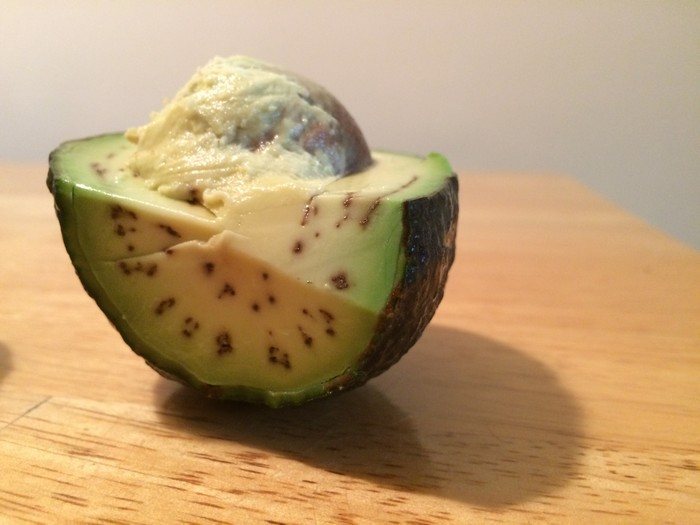
Black dots
The presence of black dots on the pulp does not always indicate spoilage of the fruit. Their presence may mean that:
- the fruits were collected from young trees.Such fruits have small black dots on the pulp. This is a feature of the tree's "maturation", and therefore such fruits are edible;
- during transportation, the fruits were kept in the refrigerator so that they did not ripen, and then they were transported to stores with room temperature in the sales areas. Avocados begin to ripen in such conditions. Dark dots on the pulp indicate that the product has been exposed to temperature changes;
- the fruits were stored for a long time at low temperatures or were in water.
It is impossible to find out about the presence of black dots on the pulp by the whole fruit. You can only check its ripeness by the peel.
Dark spots
This defect can appear both on the peel and the pulp. In the first case, dark spots indicate that the fruit is affected by the ascomycete fungus, which causes anthracnose. The disease manifests itself in the form of round dark spots, clearly visible on the peel.
In the second case, dark spots on the pulp indicate:
- that the fruit is overripe;
- that anthracnose has penetrated the fruit;
- improper storage.
The avocado peel is dense and uneven, and therefore you may not immediately notice the darkening on it. You need to carefully examine the fruit before buying.
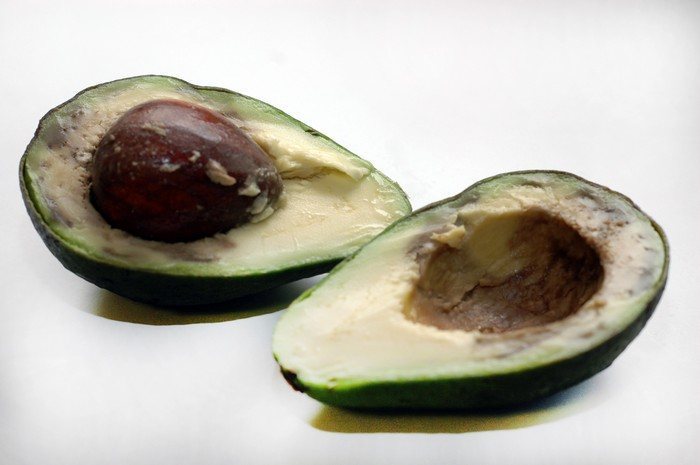
Can you eat a fruit with such defects
Not always the presence of darkening, spots, dots or veins indicates that the fruit is spoiled. There are signs that help you understand that you can’t eat an avocado. Among them:
- darkening of the pulp around the pit. If the blackness has spread to both halves and goes all the way down, then eating such an avocado is undesirable;
- dark spots away from the pit. They indicate that the fruit is overripe.If they occupy no more than 10% of the pulp, then it is enough to cut out the darkened parts, but if there is a large area, and the fruit has an unpleasant odor, then it is no longer edible;
- brown spots with a musty smell. This indicates rotting.
You can eat avocados if:
- Small black dots are visible on the pulp, but there is no unpleasant odor. It is safe to eat such an avocado, since it is not a sign of spoilage, but an indicator of the youth of the tree;
- A small dark spot has formed on the pulp. It is enough to cut out the darkened part, which is a sign of the beginning of overripening, and use the rest for food;
- the green flesh of the fruit began to darken. If you cut the fruit and leave it in the air for 15-20 minutes, you can see how the oxidation of iron occurs. This fruit can be safely eaten, but should not be stored.
If any defects appear on the pulp, it is important to taste it. A good fruit should not be bitter. Signs of bitterness indicate either the immaturity of the fruit, in which case it will be very strong, or its long staleness. Avocado also acquires a “bitterness” during heat treatment, so it is most often consumed raw.
Under what signs is it better to throw out an avocado?
Fruits with visible defects should not be purchased or eaten. You should throw away your avocado if:
- dark spots appeared on its skin;
- most of the pulp has turned black;
- when cutting, an unpleasant musty smell appeared;
- there is mold on it.
Experts recommend consuming the fruits immediately, without leaving them for later. The only exception is when the fruit is unripe.In this case, even cut avocados can be put in a bag and left for a day to ripen.
How to choose a good ripe avocado based on external signs
It is not difficult to choose a quality fruit. The ripeness of an avocado is checked by pressing on the peel:
- if at the same time a dimple appears, which immediately straightens, then the fruit is ripe;
- if the pressure point remains, it means the fruit is overripe and will taste bitter.
It is imperative to check the integrity and quality of the peel so that there are no dents or stains on it. Its color is also important. An unripe fruit has a light green skin, while an overripe one has a black skin. The ripe fruit has a dark green or brownish skin.
Another “indicator” of a good avocado is its stem. If it is dark in color, comes off easily and is dry to the touch, then the fruit is ripe. In unripe fruit it is light and difficult to tear off.
How to avoid spoilage during storage
This fruit cannot be stored for a long time, but its spoilage can be delayed for a couple of days if it has been cut. The conditions are simple: the half with the pit should be poured with lemon juice to prevent iron oxidation, wrapped in foil and placed in the refrigerator.
You can store whole and fully ripened fruits for no more than 1-2 days in the refrigerator, but if they are green, they should be placed in a paper bag and left for 3-5 days. In this case, you need to check the color change of the fruit peel and its stalk every day.
Culinary experts have “discovered” a quick way to ripen an avocado: if you put a banana or an apple in a bag of fruit, the process will speed up and take only a couple of days.
Avocados are used both in cooking and for creating homemade cosmetics.To avoid disappointment in your purchase, you should check the fruit for ripeness. Minor defects in the pulp do not indicate that the product is unfit for consumption. The best indicator of quality is taste and smell. The first should be buttery and sweet, and the second should be distinctly fruity. Minor defects can be cut out with a knife, but if the flesh has turned black and acquired a musty smell, then the fruit can be safely thrown away.


